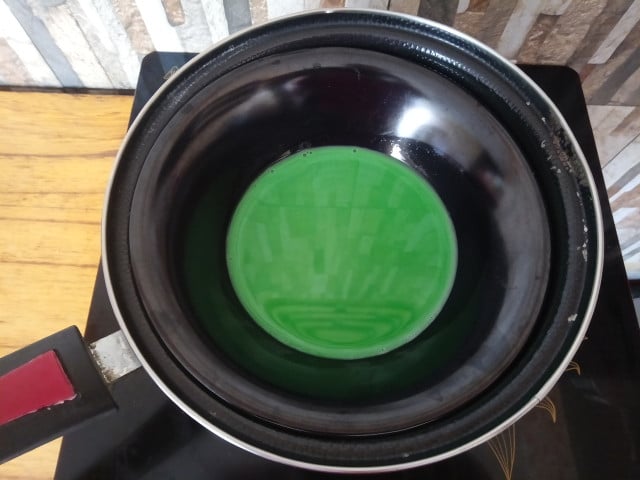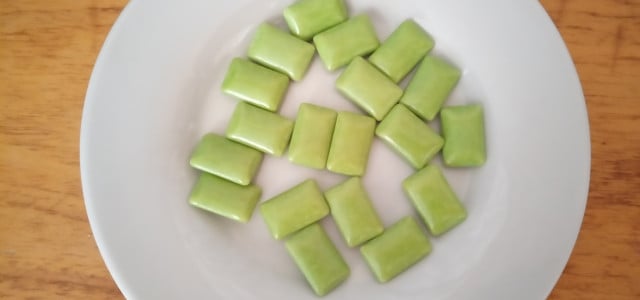Homemade gum contains no artificial flavors, colors, or sweeteners whilst being deliciously chewable. We’ll show you how to make it in five simple steps.
Store-bought gum is easy and convenient to buy when you feel the need to chew, but it can be pretty unhealthy as it contains a high amount of sugar and synthetic ingredients. Consuming too much sugar can lead to sugar headaches or sugar withdrawal. Artificial sweeteners are often used in gum instead of sugar, but although lower in calories, they can contribute to numerous health problems such as obesity and cancer.
As well as artificial sweeteners, synthetic flavoring and coloring are used to make chewing gum. Artificial coloring can cause numerous health problems such as hypersensitivity and allergic reactions, as well as being bad for the environment. The main ingredient in gum is a gum base which includes emulsifiers, softeners, fillers, waxes, and resins, although these individual ingredients are often not always listed on gum packaging. Find out more about what chewing gum is made of, and keep reading to find out how to make homemade chewing gum.
Why Homemade Gum?

(Foto: Lorna P. / Utopia)
People have been chewing gum for centuries. In fact, evidence has been found in Sweden that ten thousand years ago, people used to chew tree sap or gum during the Stone Age. Similarly, the Mayans and Aztecs used to chew a type of prepared tree resin to reduce hunger and provide fresh breath. Other ancient types of gum were made from beeswax, grass, or leaves.
There is a range of different types of gum on the market these days with different selling points and features. For example, some types of gum contain natural sweeteners, such as stevia, which is produced from the stevia plant native to South America. It is also calorie-free, making it a great healthy alternative to sugar, as well as providing a sweet taste. Another natural sweetener is xylitol or birch sugar, which is also said to improve dental hygiene by reducing tooth decay and drymouth; however, a lot of energy is involved in its production, making it less environmentally friendly.
Modern gum often uses synthetic coloring to make it look attractive, but studies have found that artificial food coloring can lead to some behavioral problems in children, such as hyperactivity. Using natural food dyes can eliminate this problem. For example, the following recipe uses pandan extract to give the gum an inviting green color.
Check out these five simple steps on how to make your own tasty, homemade natural gum.
How to Make Natural Homemade Gum



(Foto: Lorna P. / Utopia)
Yield: 12 pieces
Ingredients:
- 1/2 cup food-grade beeswax
- 3 tbsp. corn syrup
- 5 drops of natural peppermint flavoring (available on Amazon**)
- 5 drops of natural food coloring or pandan extract (optional)
- 1 cup natural stevia sweetener (available on Amazon**)
Instructions:
- Balance a large glass bowl on top of a saucepan of water and heat on a medium-high setting. Put the beeswax in the bowl and melt it using the hot water underneath.
- Stir in corn syrup, peppermint flavoring, and natural food coloring. Add the stevia and mix well.
- Pour the gum mixture into a candy mold (available on Amazon**) or ice cube tray and chill.
- Remove the gum from the molds and cut to a smaller size if necessary. Store in an airtight container.
Read more:
- Is Xanthan Gum Vegan?
- Get Rid of Garlic Breath: 9 Remedies for Mouth and Hands
- 5 Powdered Sugar Substitutes and DIY Powdered Sugar
Important Information regarding Health-related Topics.
** Links to retailers marked with ** or underlined orange are partially partner links: If you buy here, you actively support Utopia.org, because we will receive a small part of the sales proceeds. More info.Do you like this post?







